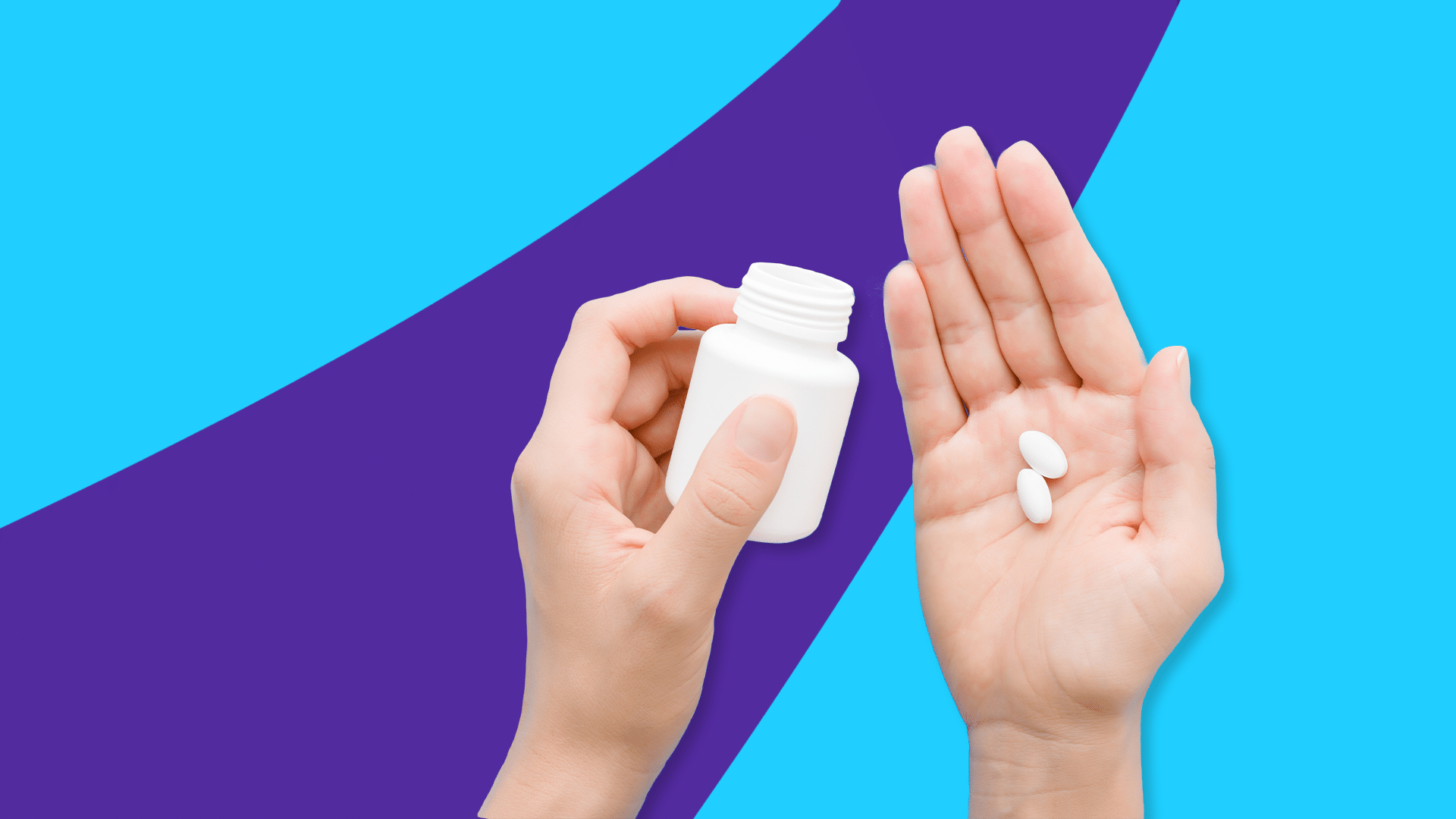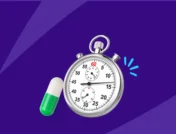Compare atorvastatin alternatives | Other HMG CoA Reductase Inhibitors | Colestid | Tricor | Zetia | WelChol | Natural alternatives | How to switch meds
Cholesterol is a fatty substance we all need in our bodies, but we only need it in healthy amounts. The body needs cholesterol for healthy cellular structure, hormone synthesis, and nerve insulation. Too much cholesterol, however, leads to serious conditions related to coronary heart disease such as heart attack or stroke. High blood cholesterol, or hypercholesterolemia, is a condition where you have unhealthy levels of cholesterol typically due to genetic patterns or unhealthy lifestyle choices. Cholesterol is a waxy, lipid substance, comparable to candle wax, and can lead to deposits in your arteries which cause blockage. This blockage leads to atherosclerosis and cardiovascular disease if not treated. It is important for your heart health to have your cholesterol levels monitored with regular bloodwork.
Cholesterol is carried on two types of lipoproteins through your body: low-density lipoproteins (LDL) and high-density lipoproteins (HDL). LDL cholesterol is the “bad” cholesterol that leads to plaque build-up in the arteries. HDL cholesterol is the “good” cholesterol that carries any fatty build-up to your liver to be flushed from the body.
Triglycerides are the most common type of fat in your body and they store the excess energy from your diet. When doctors check your blood lab work, they are hoping to see low levels of LDL cholesterol and triglycerides, and higher levels of HDL cholesterol. Your physician may also refer to a level known as your total cholesterol, which is a number that is reflective of both LDL and HDL. High cholesterol rarely has any symptoms, so regular blood work is the best way to screen for hypercholesterolemia.
There are many drug types that help treat high cholesterol or hyperlipidemia. HMGCoA reductase inhibitors, more commonly referred to as “statins”, were first discovered in the late 1970s. They were quickly recognized as the most effective effort at lowering LDL levels. Statin drugs lower LDL levels by reducing hepatic cholesterol production and increasing LDL clearance from the body. The first statin drug to be approved to come to market by the Food and Drug Administration (FDA) was lovastatin, branded as Mevacor. Each statin that came to market in the years after would offer even more superior ability to lower LDL levels. Atorvastatin, branded as Lipitor by Pfizer, came to the market in 1996 and has since become one most widely used statin drugs. Atorvastatin can lower LDL levels between 40-60% from baseline depending upon dose.
Atorvastatin is a very effective clinical treatment option, but it may not work for everyone. Statins are known to increase risk for myopathies, or myotoxicity. This is characterized as musculoskeletal pain which tends to be dose-dependent and severe myopathies occur in less than 1% of patients taking statins. While myopathies do resolve upon discontinuing statin medications, there is no treatment for them in order to continue the statin comfortably. While switching from one statin to another may be appropriate in order to see a more effective outcome or avoid certain drug interactions, it is not thought to avoid the incidence of myopathies. Once a myotoxicity is identified on one statin, it should be assumed it will be the same with all statins for that patient. Statins are also known to increase blood sugar and the incidence of diabetes in patients. While the risk is low, also less than 1%, it is important to be considered when choosing appropriate therapy.
While atorvastatin is a very effective choice for reducing LDL cholesterol, it may not be right for everyone. We will cover other treatment options which may be appropriate alternatives if you and your prescriber determine atorvastatin is not right for you.
What can I take in place of atorvastatin?
What can I take in place of atorvastatin? |
|||
|---|---|---|---|
| Drug name | Side effects | Dosage | Savings options |
| Atorvastatin | Myalgias, diarrhea, arthralgia, nausea | 10 mg to 80 mg by mouth daily | Atorvastatin coupon |
| Crestor (rosuvastatin) | Myalgias, diarrhea, arthralgia, nausea,
headache |
5 mg to 40 mg by mouth once daily | Crestor coupon |
| Lescol XL (fluvastatin) | Hypertension, dyspepsia, abdominal pain, myalgia | 20 mg by mouth once daily up to 40 mg twice daily | Lescol XL coupon |
| Mevacor (lovastatin) | Flatulence, constipation, headache, myalgias | 10 mg to 80 mg by mouth once daily | Mevacor coupon |
| Pravachol (pravastatin) | Dyspepsia,
constipation, headache, myalgias |
10 mg to 80 mg by mouth once daily | Pravachol coupon |
| Zocor (simvastatin) | Atrial fibrillation, gastritis, infection | 10 mg to 40 mg by mouth once daily (**80 mg daily dosing only for specific cases) | Zocor coupon |
| Questran (cholestyramine) | Constipation, vomiting, osteoporosis | 4 g to 16 g by mouth in divided doses each day | Questran coupon |
| Colestid
(colestipol) |
Constipation, colestasis,
Gastrointestinal bleeding, peptic ulcer |
5 g to 20 g by mouth in 2 to 4 divided doses per day | Colestid coupon |
| WelChol
(colesevelam) |
Hypertriglyceridemia, constipation, dyspepsia, headache | 1.875 mg by mouth twice daily or 3.75 mg once daily | WelChol coupon |
| Zetia (ezetimibe) | Infection, diarrhea, back pain | 10 mg by mouth once daily | Zetia coupon |
| Lopid (gemfibrozil) | Dyspepsia, abdominal pain, cholelithiasis, diarrhea | 600 mg by mouth twice daily | Lopid coupon |
| Tricor (fenofibrate) | Elevated hepatic enzymes, abdominal pain, back pain, headache | 48 mg to 145 mg by mouth once daily | Tricor coupon |
| Repatha (evolocumab) | Hyperglycemia, pharyngitis, headache | 140mg subcutaneously every 2 weeks or 420 mg subcutaneously once monthly | Repatha coupon |
| niacin | Flushing, diarrhea, nausea, vomiting | 1.5 mg to 3 mg by mouth in 2 to 3 divided doses per day | Niacin coupon |
| Vytorin (ezetimibe/ simvastatin) | Elevated hepatic enzymes, headache, myalgia | 10 mg to 10 mg/40 mg by mouth once daily | Vytorin coupon |
Other alternatives to atorvastatin
- Lipofen (fenofibrate)
- Fenoglide (fenofibrate)
- Triglide (fenofibrate)
- Antara (fenofibrate)
- Prevalite (cholestyramine)
- Livalo (pitavastatin)
- Psyllium
- Flaxseed
- Garlic
- Red yeast rice
- Tumeric
Top 5 atorvastatin alternatives
Other HMG CoA Reductase Inhibitors (statins) such as: Crestor (rosuvastatin), Zocor (simvastatin), Pravachol (pravastatin), or Mevachor (lovastatin)
For some patients, atorvastatin may not be effectively managing their high cholesterol, but another statin may be more appropriate. One reason certain statins aren’t appropriate for particular patients is the potential for interactions with other drugs they are taking or food products such as grapefruit juice. When atorvastatin is given with CYP3A4 inhibitors, it is more likely to cause myopathy, rhabdomyolysis, and acute renal failure. Rosuvastatin is not as sensitive to this reaction and has shown the ability to lower cholesterol as effectively as atorvastatin. Pravastatin has fewer documented drug interactions than other statins and is a safe option for many, though it is not shown to be as potent in terms of reducing cholesterol levels.
Colestid (colestipol)
Colestipol hydrochloride is an oral antilipemic agent that works differently from statins. It is a non absorbable bile acid sequestrant. Colestipol is not absorbed systemically into the bloodstream and therefore can be used in populations that statins can not be such as pregnant women and children. Colestipol works by releasing chlorine and combining with bile acids, of which cholesterol is the precursor, in the intestines. This forms an insoluble complex that is excreted in feces. Colestipol will lower LDL cholesterol and has essentially no effect on HDL cholesterol. It can, however, raise triglycerides and is therefore not appropriate in patients who already have high triglycerides.
Tricor (fenofibrate)
Fenofibrate is also an oral antilipemic agent. It is a fibric acid derivative and the prodrug to fenofibric acid. It is most useful in lowering triglycerides and also has an LDL lowering effect. Its primary actions are achieved through interactions with receptors known as PPARs which alter lipoprotein metabolism for favorable effects on cholesterol. Fibrates are contraindicated in patients with hepatic disease or unexplained liver function abnormalities.
Zetia (ezetimibe)
Ezetimibe is an oral antilipemic and cholesterol absorption inhibitor drug which can be used alone or in combination with statins or fibric acid derivatives to treat hypercholesterolemia. It works by blocking the absorption of cholesterol in the intestine. The primary advantage of ezetimibe is that it raises HDL, the “good” cholesterol, but it also has lowering effects on triglycerides and LDL cholesterol as well. These effects are synergistic when combined with statins. Ezetimibe should also be avoided in patients with liver disease. It is not recommended in pregnant patients or children.
WelChol (colesevelam)
Colesevelam is also a bile acid sequestrant used in the treatment of hypercholesterolemia as well as diabetes mellitus. It is an oral, non-absorbable hydrogel polymer that has a high capacity to bind to bile acids. Colesevelam is effective at reducing LDL cholesterol, and while not as potent as statins alone, it does have a synergistic effect when used with statin therapy. Colesevelam should be used cautiously in patients with cholelithiasis (gallstones) or biliary obstruction. Like colestipol, colesevelam can increase triglycerides and should not be used in patients whose triglyceride levels are already elevated.
Natural alternatives to atorvastatin
There are many alternatives to prescription drugs when looking to lower your cholesterol. It is important to make sure your doctor is a part of your prescription and non-prescription treatments to lower your cholesterol to help you determine if they are safe and adequate.
One of the first lifestyle changes recommended is diet and exercise. Your healthcare professional can work with you to build a low-fat diet combined with regular physical activity that can make a big difference in your cholesterol levels.
There is no “natural” statin-like supplement. Niacin is a B-complex vitamin that has a long history of use in helping to lower cholesterol levels. There are good dietary sources of niacin in foods such as beans, green vegetables, and whole wheat. Niacin has been shown to lower total cholesterol, LDL cholesterol, and triglycerides, while also raising HDL cholesterol. For reasons not entirely understood, it appears to be more effective in women than men. While niacin is effective and one of the most proven supplements for lowering cholesterol, it does not possess the same cholesterol-lowering abilities as statins.
There are other supplements that have shown some positive effects on serum cholesterol levels. Flaxseed, red yeast rice, and garlic are among those. Clinical data suggests that turmeric can lower LDL levels and may provide some protection against cardiac disease. Before beginning any supplements, discuss them with your doctor or pharmacist to make sure they are safe for you and don’t present any interactions with other therapies you may be taking. The information presented here is not intended to replace medical advice from your healthcare team.
How to switch to an atorvastatin alternative
There are a variety of reasons you may feel atorvastatin is not the right choice for you. If you have already begun atorvastatin therapy, do not stop the therapy until you speak to your prescriber and agree upon a new plan. If you are experiencing muscle pain that you fear may be caused by your atorvastatin therapy, bring this to your doctor’s attention immediately. They will help you decide which of the statin alternatives is best for you. If you become pregnant or are planning to, this should be shared with your healthcare provider to ensure they pick the safest option for you.
Your pharmacist can help you determine which cholesterol-lowering agents are covered by your insurance plan. Many of these agents are generic and relatively affordable. SingleCare offers free savings coupons on most prescription antilipemic drug choices.











